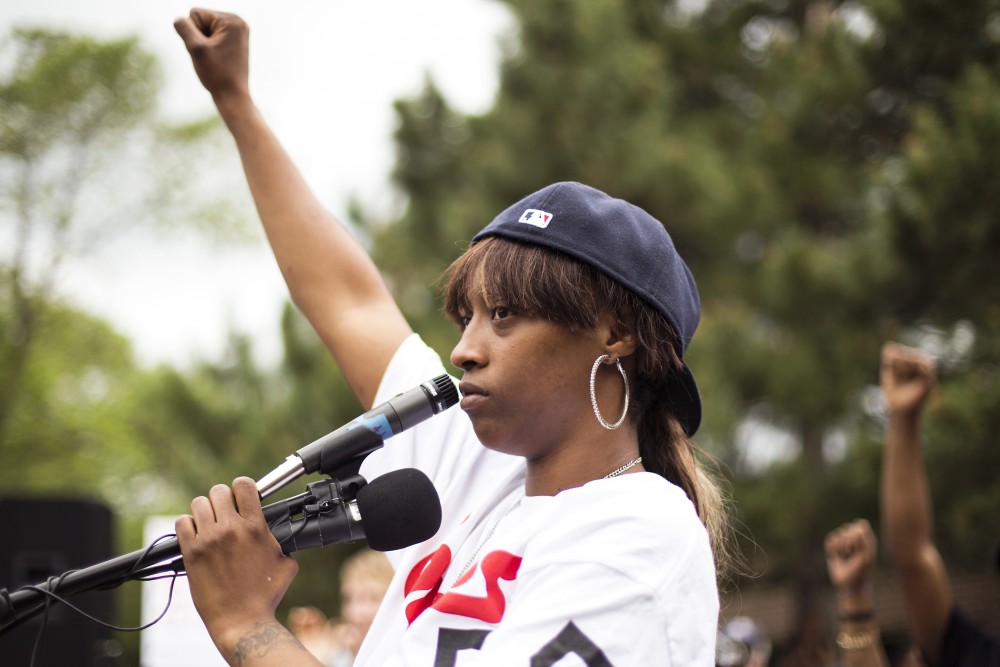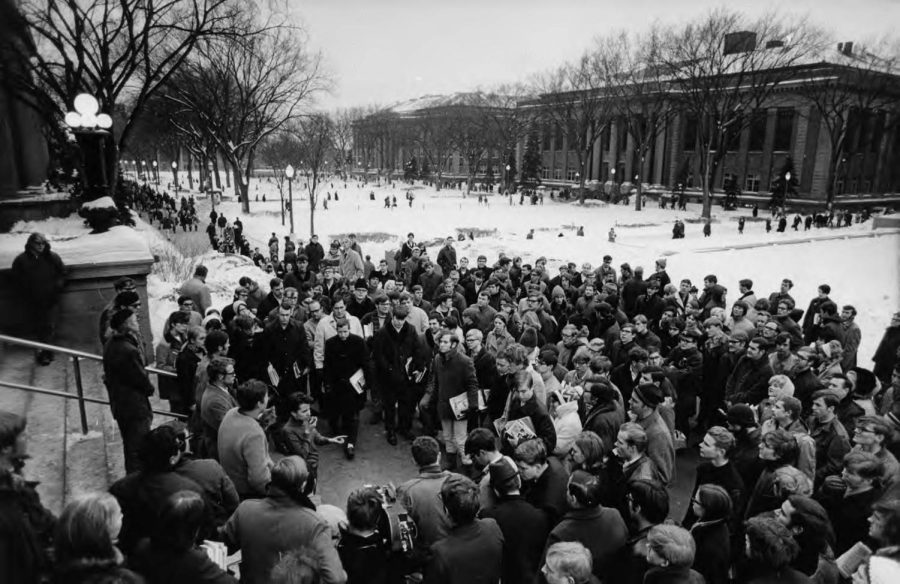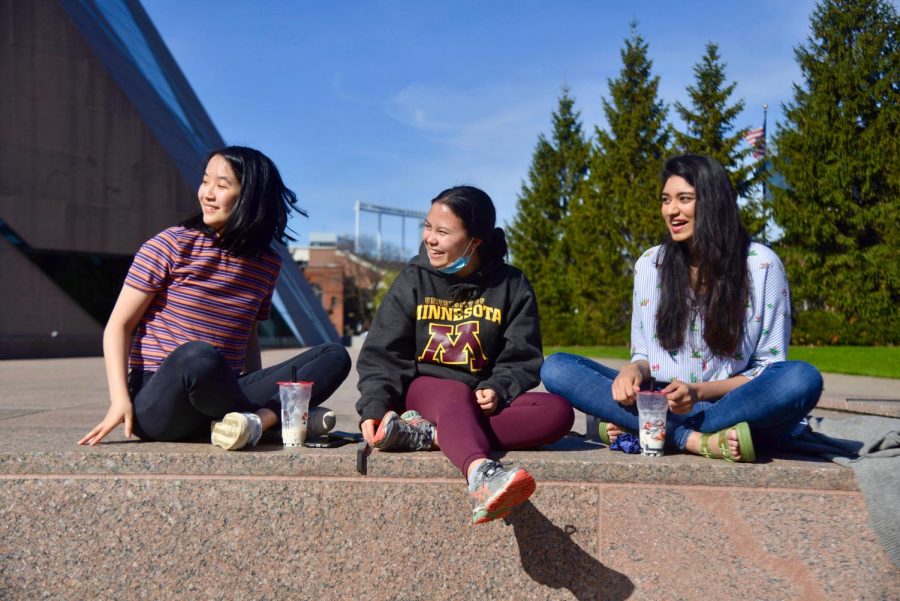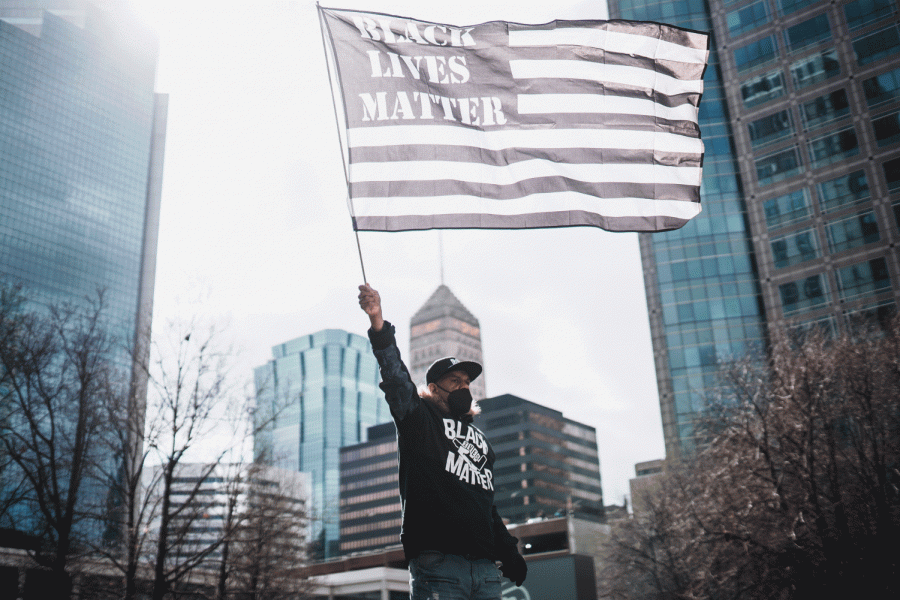In the span of 36 hours, two fatal shootings of black men — one, Alton Sterling from Baton Rouge, La., the other, Philando Castile of St. Paul — left the country in a state of stirring dismay.
Then, a retaliatory shooting by a heavily armed sniper in downtown Dallas left five police officers dead. What had been a peaceful march aimed at spotlighting police violence quickly whipsawed the nation — intensifying the worries and frustrations of many Americans over racial disparities, officers’ use of excessive force and open-carry laws.
“When incidents like this occur, there’s a big chunk of our fellow citizenry that feels as if, because of the color of their skin, they are not being treated the same. And that hurts,” President Barack Obama said in a statement after arriving in Warsaw, Poland, on Thursday. “This is not just a black issue. It’s not just a Hispanic issue. This is an American issue.”
Michelle Phelps, a University of Minnesota criminology, law and deviance professor, said the shooting of Castile was “deeply disheartening.”
“Because police officers are sort of on guard and because we have this … deep history of racial tensions … there [is] sort of this pervasive ‘us versus them’ between the police and many black communities,” she said.
In Minnesota, the death of Castile led to a spate of protests across the Twin Cities, with protesters anchoring their demands for justice and officer accountability at an encampment outside of Gov. Mark Dayton’s Summit Avenue residence.
Castile’s shooting comes nearly eight months after the fatal shooting of North Minneapolis resident Jamar Clark roiled Minneapolis. Last November, police shot and killed Clark, 24, after a tussle between him and the officers.
Leaders call for investigation
On Thursday, Dayton and many members of Minnesota’s congressional delegation urged the U.S. Department of Justice to investigate Castile’s death. Dayton also called upon the Minnesota Bureau of Criminal Apprehension to conduct its own investigation.
In a statement, Rep. Keith Ellison, D-Minn., echoed these sentiments, saying, “Although the investigation is just beginning, I ask the Bureau of Criminal Apprehension to release any and all videos related to Philando Castile’s shooting as soon as possible. The public deserves transparency in the pursuit of truth and justice.”
On Friday, Ramsey County Attorney John Choi said he was unsure if he would appoint a grand jury to decide whether charges are filed against the officers involved in the shooting. Choi’s office will review the case once the BCA has finished their investigation.
Earlier this year, Hennepin County Attorney Mike Freeman forwent a grand jury in the shooting of Jamar Clark; his office later decided not to indict the officers involved in the death of the 24-year-old.
At Saint Paul Public Schools, where Castile was an employee and alumnus, colleagues remembered him as amicable and cheery.
“Kids loved him. He was smart, over-qualified. He was quiet, respectful, and kind,” said one coworker in a press release issued by the district Thursday. “I knew him as warm and funny […]. He wore a shirt and tie to his supervisor interview and said his goal was to one day ‘sit on the other side of this table.’”
Castile graduated from St. Paul Central High School in 2001. Since 2002, he worked for the school district in the nutrition services department. In 2014, he was promoted to cafeteria supervisor at J.J. Hill Montessori Magnet School in St. Paul.
“They shot him”
A Facebook Live video — recorded by Diamond Reynolds, Castile’s girlfriend — depicts the gruesome aftermath of last Wednesday’s shooting. In it, Castile, 32, collapses in his seat, visibly bloody, as Reynolds relays what has happened; in the foreground, an officer stands outside the driver’s side window, still aiming his gun at Castile. The video has since been viewed 5.6 million times on Facebook as of Tuesday evening.
Around 9:05 p.m., Castile, Reynolds, and her four-year-old daughter were pulled over at the intersection of Larpenteur Avenue and Fry Street in Falcon Heights, during a routine traffic stop for a broken taillight.
In her live recording, Reynolds said Castile had told the officer he was licensed to carry a firearm; he then gave the cop a forewarning as he pulled his ID from his pocket. In turn, the officer shot Castile in the arm four times.
“They shot him — he shot him three times because we had a busted tail light,” Reynolds says in her video.
Castile was taken to Hennepin County Medical Center and pronounced dead at 9:37 p.m.
“He don’t deserve this,” Reynolds said in the video. “He’s a good man; he works for St. Paul Public Schools. He doesn’t have no record of anything.”
In a Thursday press release, the BCA, which is investigating the shooting, identified Jeronimo Yanez as the officer involved in the shooting. Both Yanez and the other officer on the scene, Joseph Kauser, have been placed on paid administrative leave.
In a 2015 report, the St. Anthony Police Department stated that their patrol division aims to suppress and deter criminal activity through active traffic law enforcement. In 2015, the city issued 2,410 citations, 661 of which were for traffic-related offenses.
Thomas Kelly, Yanez’s attorney, told the Associated Press on Monday that his client pulled Castile over because he matched the description of an armed robbery suspect. Kelly did not elaborate on the specifics of the case, insisting that Yanez responded to the presence of a gun, not Castile’s race.
Castile’s family said they intend to file a lawsuit in the death of the 32-year-old in a press conference Tuesday. While a defendant has not yet been named, Glenda Hatchett — the family’s attorney — said she intends to aggressively pursue justice.
“We’re going to sue whoever’s responsible,” she said.


Racial bias comes into question
Outside of his St. Paul residence on Thursday, Dayton decried the actions of police, saying he believes Castile’s death to be part of a pervasive issue of unaccountability among police officers.
“Would this have happened if the driver and passengers were white? I don’t think it would’ve,” he said. “I’ve heard in the last few hours from very distinguished African American men and women who recounted to me how they’ve been pulled over, singled out and treated very differently because of their race.”
Dayton and Minnesota Department of Public Safety Commissioner Mona Dohman said the state will continue to evaluate and improve training procedures for law enforcement officers.
Dohman also said she has instructed the BCA to make this investigation its top priority.
On Friday afternoon, the Falcon Heights City Council held an emergency meeting, passing two measures, the first to allocate funds up to $50,000 for the city administrator to use in the case of protests, and the second to hire a public relations consultant for the city.
Leaders from St. Paul’s chapter of Black Lives Matter renewed their interest in meeting with Falcon Heights mayor Peter Lindstom to discuss policing protocol in the city.
Thursday afternoon, Nekima Levy-Pounds, Minneapolis NAACP president, lead protesters in a chant outside the Governor’s Mansion, yelling, “No justice, no peace. Prosecute the police.”
“There is a system and a culture that says it’s okay to be anti-black on the job,” she said.
Spoke with a man who's 9-yr-old daughter goes to JJ Hill, said he & wife are struggling to explain to her what's happened #PhilandoCastile
— Chris Aadland (@cjaadland) July 10, 2016
Crowd at @GovMarkDayton's place has definitely thinned out. Still about 250-350 here though, chanting "we want justice"
— Chris Aadland (@cjaadland) July 10, 2016
In the aftermath, a community grieves
Thursday afternoon, on the University of Minnesota’s campus, a “healing, centering” discussion was held at Coffman Union, led by Minnesota Student Association President Abeer Syedah. Students and faculty expressed frustration and fatigue over the fatal police shootings of Castile and Sterling.
Though students said Dayton’s pointed statements and the nation’s reaction to the deaths of Sterling and Castile were more measured and meaningful than other responses to fatal police shootings — like that of Jamar Clark — their skepticism of a system riddled with distrust remains.
“Silence is not helpful. People are realizing they have to speak out,” said Amelious Whyte, chief of staff to the University’s Vice Provost for Student Affairs. “Maybe that’s what moved the governor to come out and speak his mind.”
Later Thursday evening, about 2,000 demonstrators marched from the J.J. Hill Montessori Magnet School to the governor’s mansion, chanting, “Black lives matter,” and “I am Philando.”
At the school, protesters were sanguine, circumstances aside, but their mood took on a more confrontational tone at the governor’s mansion, where cries of “do something” drowned out Dayton’s address to protesters outside his residence.
“I came out because I might be next,” said Jiksa Tafara, an attendee. “I don’t think [police are] here to protect people.”


Frustration and arrests
Demonstrations continued into the weekend, as hundreds gathered in Loring Park Saturday — just one rally among a wave of demonstrations since last week — rallying for changes to the criminal justice system and increased accountability among police departments nationwide.
Rachel Lovejoy, a protester at the rally Saturday, said she was attracted to the event because of its message.
“The rally is about atonement for past mistakes and reaffirming our commitment to right the wrongs that have been committed,” she said.
Also in attendance at the rally was the Minnesota Immigration Rights Action Committee.
“We’re standing for justice … [MIRAc tries] to show support for anyone struggling with racism,” said Brad Sigal, a volunteer with MIRAc and protester at the event.
Sigal said the Castile shooting was shocking but nothing new, noting the history of oppression African Americans have faced in the U.S. He said shootings and violence — like that against Castile — must cease.
“The only way it’s going to stop is if people organize and demand change,” Sigal said.
Later Saturday evening, hundreds of protesters staged an occupation of Interstate 94, blocking the highway’s east- and west-bound lanes near the Lexington Avenue exit in St. Paul.
I-94 was closed from approximately 7:30 p.m. Saturday night until about 1:30 a.m. Sunday morning due to the protests.
After repeated attempts by the police to calm protesters, tension rose between the two parties, said Steve Linders, public information officer for the St. Paul police department. Officers used smoke and marking rounds in an attempt to disperse crowds.
Police officers confronted demonstrators who threw rocks, bricks, bottles and fireworks at them, Linders said.
Over the course of the occupation, 50 people were arrested. Another 52 were cited and released later that morning as they marched through St. Paul near Grand Avenue and Dale Street.

The unrest — which left 21 police officers injured — was immediately denounced by Black Lives Matter Minneapolis, politicians and community leaders. Black Lives Matter said the violence was due to agitators among the demonstrators and that throughout the night the group repeatedly pleaded for protesters to remain peaceful.
“We are and always have been committed to nonviolent, peaceful protest[s],” the group said in a Facebook post.
At a press conference on Sunday morning, St. Paul Mayor Chris Coleman and Chief of Police Todd Axtell condemned the events.
“We will not tolerate this in the city of St. Paul. … What happened last night and early this morning does a disservice to those that have lost their lives this last week,” Coleman said.
Axtell said the St. Paul police department has had a long and proud tradition of allowing peaceful protesters their First Amendment rights.
“Protesters last night turned into criminals, and I’m absolutely disgusted by the acts of some — not all, but some,” Axtell said.
Forty-seven, including some University students, have been charged by Ramsey County in connection with the I-94 demonstration.
In a statement Tuesday, American Civil Liberties Union of Minnesota Executive Director Charles Samuelson said the charges — gross misdemeanors for most — is too extreme and called for charges to be dropped.
“These charges appear to be based on the actions of what most parties, including a St. Paul Police spokesperson, agree were outside agitators,” he said in the statement. “The vast majority of the demonstrators were peaceful and spoke out against violent action by a few.”
In the wake of Castile’s shooting, concerned community members echo the waves of protest around the country, from Denver to Georgia to Baton Rouge.
“I’m tired of people feeling unsafe,” Levy-Pounds said at a rally on Saturday.
At Dayton’s Thursday morning press conference, the governor apologized for Castile’s death. Amid clenched fists, and a growing clamor for justice from the crowd, Reynolds rejoined, “I don’t want you guys to be sorry; I want y’all to be more careful.”
“You want justice; you deserve justice; you’ll get justice,” Dayton said.
Dylan Scott, Hannah Weikel, Ryan Faircloth, Raju Chaduvula, Nick Wicker, Christopher Aadland and Eliana Schreiber and the Associated Press contributed to this report.









